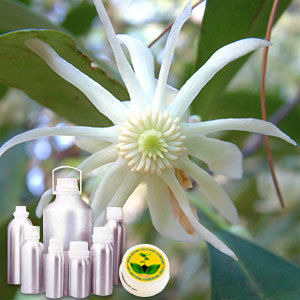Anise Oil
 | Botonical Name | : | Illiciumverum |
 | CAS # | : | 8007-70-3 |
 | Country of Origin | : | India |
 | Color & Odor | : | Colorless to pale yellow liquid @22C with Licorice odor |
 | Solubility | : | Insoluble in water, soluble in alcohol and oils |
 | F.E.M.A. # | : | 2096 |
 | Specific Gravity | : | 0.973 - 0.991 @ 25°C |
 | Optical Rotation | : | -2° ~ +2° |
 | Refractive Index | : | 1.548 - 1.564 |
 | Flash Point | : | 83.33°C |
 | Major Constituents | : | Anethole |
 | Plant Part Used | : | Seeds |
 | Extraction Method | : | Steam Distillation |
DESCRIPTION:
Anise Oil offered is a dainty, white-flowered urnbelliferous annual that is about 18 inches high and has secondary feather-like leaflets of bright green color. The oil is distilled from the fruit part where that yields on distillation is from 2.5 to 3.5 percent of fragrant, syrupy and volatile oil in which anethol, the principal aromatic constituent is present to about 90 per cent. CONSTITUENTS:
Anethol (present to about 90 per cent), fixed oil, sugar, choline and mucilage, Anethole.Aromatic Summary / Note / Strength of Aroma:
Anise Star has a powerful and licorice-like scent, giving a strong top note.BLENDS WITH:
Rose, orange, lavender, spicy essentials, Sassafras and Carbolic oil. COMMON NAMES:
Karanja Seed Oil, Karanj Oil. USES:
Anise oil is used in treatment of bronchitis, coughs, colds, flatulence, muscle aches, flu and rheumatism. Anise essential oil is also a good antiseptic and used, mixed with oil of Peppermint or Gaultheria (Wintergreen) to flavour aromatic liquids. Further, oil of Anise is also used also against insects especially when mixed with Sassafras and Carbolic oil.


































